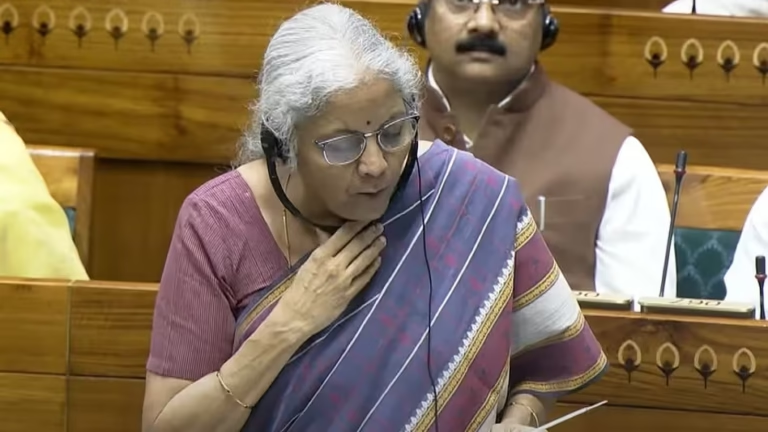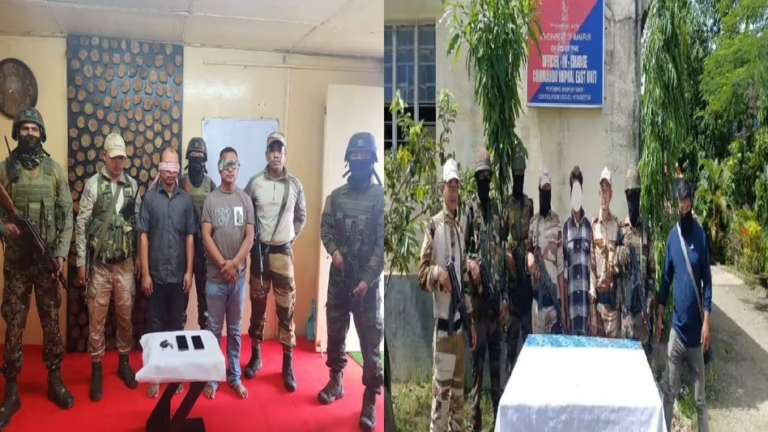Manipur Violence: Three, Including MR Personnel, Dead in Ukhrul District
Summary of the News Article
In a tragic incident on October 2, 2024, three people, including a Manipur Rifles (MR) personnel, were killed in Ukhrul district of Manipur due to violence. The event adds to the ongoing unrest in the state, which has been facing a series of violent confrontations. The state government, security forces, and local authorities are currently investigating the incident and taking measures to prevent further escalations.
Violence in Manipur’s Ukhrul District: Ongoing Unrest Claims More Lives
Introduction: The Tensions in Manipur Continue to Rise
Manipur, a state rich in culture and diversity, has recently been caught in a web of violence that seems to grow with each passing day. What happened in Ukhrul district on October 2, 2024, where two lives were tragically lost—including a Manipur Rifles (MR) personnel—has only fueled these tensions further. The escalating conflict highlights the underlying ethnic and socio-political struggles that have long existed in the region.
With ethnic clashes, insurgencies, and mistrust among various groups, it seems like peace in Manipur is a distant dream. But what exactly led to this tragic incident? Let’s break it down to understand the root causes, how the authorities are responding, and what this means for the future of Manipur.
A Look at the Incident: What Happened in Ukhrul?
On October 2, 2024, violence erupted in Ukhrul district, leading to the deaths of two individuals—one being a Manipur Rifles personnel. While details of the confrontation remain under investigation, it is part of the larger pattern of unrest and violence that has gripped the state in recent months.
Ukhrul, known for its scenic beauty and diverse community, has become a hotspot for these clashes, reflecting the growing divide between various ethnic groups and factions. The death of the Manipur Rifles personnel adds a layer of seriousness, as it brings security forces directly into the line of fire.
Understanding the Larger Conflict: Manipur’s Ethnic and Political Struggles
To understand the gravity of this incident, we must dive deeper into the ethnic and political dynamics of Manipur. The state has long been home to several ethnic communities, including the Meiteis, Nagas, and Kukis, among others. While these communities have lived side by side for generations, tensions have often flared due to historical grievances, land disputes, and competing political interests.
The Meitei-Naga-Kuki conflict is at the heart of many violent confrontations, including the recent one in Ukhrul. The Meiteis, predominantly residing in the valley regions, and the Nagas and Kukis, who inhabit the hills, have had longstanding disagreements over territorial claims and autonomy. This division is further exacerbated by insurgent groups that operate in the region, often using violence as a means to achieve their objectives.
The Role of Insurgent Groups in Manipur’s Violence
Insurgency has long been a thorn in Manipur’s side. Numerous groups, representing different ethnic factions, have taken up arms over the years to push for greater autonomy or even outright independence. These groups often exploit existing ethnic tensions to fuel violence and gain leverage in negotiations with the state and central governments.
In Ukhrul, the presence of such insurgent groups has been well-documented, and it is suspected that the recent violence may have ties to one of these factions. The involvement of the Manipur Rifles personnel in the incident also raises questions about how security forces are dealing with insurgencies and maintaining law and order in such a volatile environment.
The Government’s Response: What’s Being Done to Restore Peace?
In the wake of the recent violence, the state government and central authorities have increased their efforts to bring peace to the region. This includes deploying additional security forces to the conflict areas, initiating peace talks between ethnic groups, and addressing some of the underlying issues that contribute to the violence.
Chief Minister N. Biren Singh has repeatedly called for peace and urged all communities to engage in dialogue rather than violence. However, these calls have often fallen on deaf ears, as deep-rooted mistrust and grievances continue to drive the conflict.
Additionally, the central government has been closely monitoring the situation, with regular meetings held to assess the security challenges and develop strategies to prevent further violence. In this context, the death of security personnel in Ukhrul is particularly alarming, as it highlights the growing danger not only for civilians but also for those tasked with maintaining law and order.
The Impact on Civilians: Living Amidst Conflict
The ongoing violence in Manipur has had a devastating impact on civilians, particularly those living in the affected districts like Ukhrul. Fear, uncertainty, and displacement have become a daily reality for many, as homes are destroyed, lives are lost, and families are torn apart by the conflict.
In areas like Ukhrul, where violence has been escalating, schools, businesses, and daily life have come to a standstill. Many families have been forced to flee their homes in search of safety, leading to a growing number of internally displaced persons (IDPs) in the state. The situation is dire, and the lack of a comprehensive solution only deepens the wounds.
The Role of Civil Society and Community Leaders in Peacebuilding
While the government plays a crucial role in addressing the violence, civil society organizations and community leaders have also stepped in to mediate between conflicting groups. Their efforts to bring dialogue to the forefront of the peace process are critical, as long-term peace can only be achieved when the root causes of the conflict are addressed through discussion and mutual understanding.
Several peace initiatives have been launched in recent years, including inter-ethnic dialogues, peace rallies, and community-based workshops aimed at fostering understanding between the different ethnic groups in Manipur. While these efforts are commendable, the road to peace remains a long one.
What Needs to Be Done: Steps Toward Long-Term Peace in Manipur
Addressing the violence in Manipur requires a multi-pronged approach that tackles the political, ethnic, and socio-economic dimensions of the conflict. Here are some key steps that can be taken to bring long-term peace to the region:
- Promoting Dialogue Between Ethnic Groups: Peace cannot be achieved without dialogue. The government must work closely with community leaders to facilitate open discussions that address the grievances of all ethnic groups.
- Strengthening Security Measures: While promoting peace is crucial, the government must also ensure the safety of its citizens. This requires stronger security measures in conflict-prone areas, as well as better coordination between state and central forces to tackle insurgency.
- Addressing Root Causes of the Conflict: Many of the issues driving the violence in Manipur are related to land disputes, political representation, and socio-economic inequality. The government must work toward resolving these root causes to prevent future violence.
- Involving Civil Society in the Peace Process: Civil society organizations play a key role in peacebuilding efforts. The government should partner with these organizations to expand peace initiatives and create platforms for dialogue and reconciliation.
- Empowering Local Communities: Finally, empowering local communities to take ownership of the peace process is essential. This includes providing them with the resources and support they need to engage in dialogue, build trust, and work toward a shared future.
Conclusion: Can Manipur Find Peace Amidst Violence?
The incident in Ukhrul is a stark reminder of the fragile peace that exists in Manipur. With ethnic tensions, insurgency, and political unrest continuing to plague the state, finding a lasting solution seems like a daunting task. However, by following Gandhi’s path of non-violence and promoting dialogue and reconciliation, there is hope that Manipur can one day achieve peace.
As the state mourns the loss of two more lives, including a Manipur Rifles personnel, it is clear that the road to peace will not be easy. But with the right leadership, the commitment of all communities, and the involvement of civil society, peace in Manipur is not an impossible dream.
FAQs
- What happened in Ukhrul district on October 2, 2024?
Two individuals, including a Manipur Rifles personnel, were killed in a violent incident, contributing to the ongoing unrest in the region. - What are the root causes of violence in Manipur?
Ethnic tensions, insurgency, land disputes, and socio-political conflicts are the main drivers of violence in Manipur. - How is the government addressing the violence in Manipur?
The government is deploying additional security forces, initiating peace talks, and working to resolve the underlying issues that fuel the conflict. - What is the role of insurgent groups in the violence?
Insurgent groups exploit ethnic tensions and use violence to push for autonomy or independence, often making the conflict more severe. - What can be done to bring long-term peace to Manipur?
Promoting dialogue, addressing root causes of the conflict, and involving civil society in peacebuilding efforts are key steps toward achieving long-term peace.




